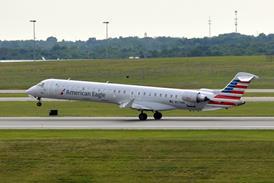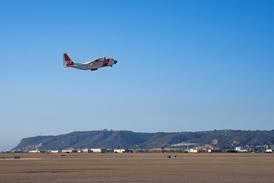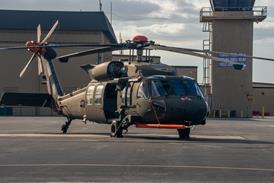While some MRO executives in the Asia-Pacific say lack of skilled labour challenges their service strategies, GMF AeroAsia chief executive Tazar Marta Kurniawan thinks otherwise.
The face of the newly-minted boss lights up when FlightGlobal posed the question about the manpower crunch facing MRO companies: “You see, that is our advantage.”
“Indonesia has the...advantage of demography," he says. "The good thing is that GMF has already prepared...since 2013 [or so].”
Kurniawan, who assumed the mantle as head of Garuda Indonesia’s MRO arm in September, says in recent years that the firm has worked with Airbus to develop crew certified for A320 and A330 work.
Since 2015, GMF has collaborated with at least 11 institutes of higher education to establish aviation technician programmes. “It has created a lot of new technicians...and many more in the pipeline.”
Kurniawan is a picture of beaming confidence: “We are already at full capacity for our aircraft maintenance. This is why we need to acquire more [space].”
BIG IN BATAM
One major project that GMF recently undertook was a collaboration with Batam Aero Technic (BAT), the MRO arm of Garuda’s low-cost rival Lion Air Group.
In August, the parties signed an agreement that will see them jointly build and operate hangars on the island of Batam.
The purpose of doing so, both parties said then, was to boost domestic MRO capacity and minimise work sent abroad.
Kurniawan says the collaboration came about as a byproduct of the airline sector’s consolidation. One example is when GMF parent Garuda took the Sriwijaya group into its fold. The same will have to happen among Indonesia’s MRO firms.
The cooperation is worked out such that there will be no “double investment”, and will allow both parties to “optimise our assets”, the GMF chief adds.
The joint Batam facility, which will see eight hangars built, will take on Indonesian carrier work first. This will take the load off its Jakarta facility, allowing the latter to attract more third-party MRO work.
He hopes that in the longer term the Batam facility would take in third-party MRO work.
The tie-up with BAT could pave the way for future collaborations in and out of the country with other companies.
PREMIUM ON COLLABORATION
“We cannot develop anything by ourselves, so we should be open for any kind of collaboration,” Kurniawan says, while pointing to another strategic partnership it signed in June with the MRO arms of Air France-KLM.
As part of that partnership, GMF will conduct airframe maintenance on Airbus A330s, Boeing 747-400s and 777s operated by Air France and KLM. Component maintenance work will also be done on on behalf of Air France Industries KLM Engineering & Maintenance.
For the coming year, GMF is hopeful that its engines division, which handles CFM56-5B and CFM56-7B engines, will grow. Kurniawan says the engine maintenance division, its “key revenue generator”, has recently redesigned its workflow to make use of a gantry-like system. Installation of the new system is underway this month, and GMF expects to handle a larger engine workload.
Currently, GMF works on an average of 40 engines per year. Looking forward, the company expects the number to increase to 75 per year.
GMF also looks to diversify its portfolio of aircraft work. Kurniawan states that the company has undertaken modification work for the Indonesian Air Force's Lockheed Martin C-130s.
GMF is also “working on our capabilities” for business jet maintenance at its Jakarta base. It recently signed a deal with the MRO arm of business jet operator Premi Air Group, Wira Jasa Angkasa, for works such as painting, cabin works, as well as component maintenance.
“We have already started, but we can do more,” Kurniawan adds.


























